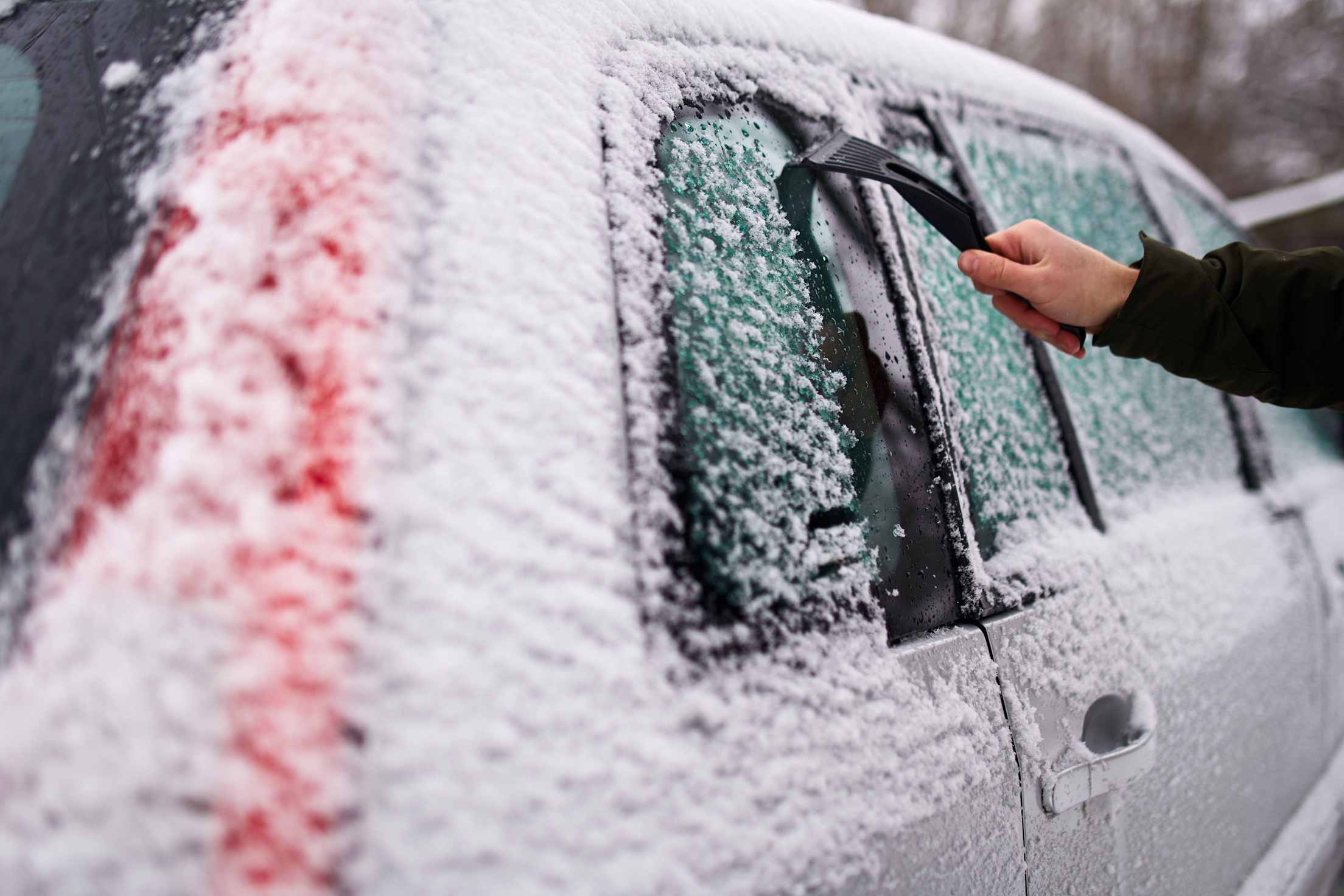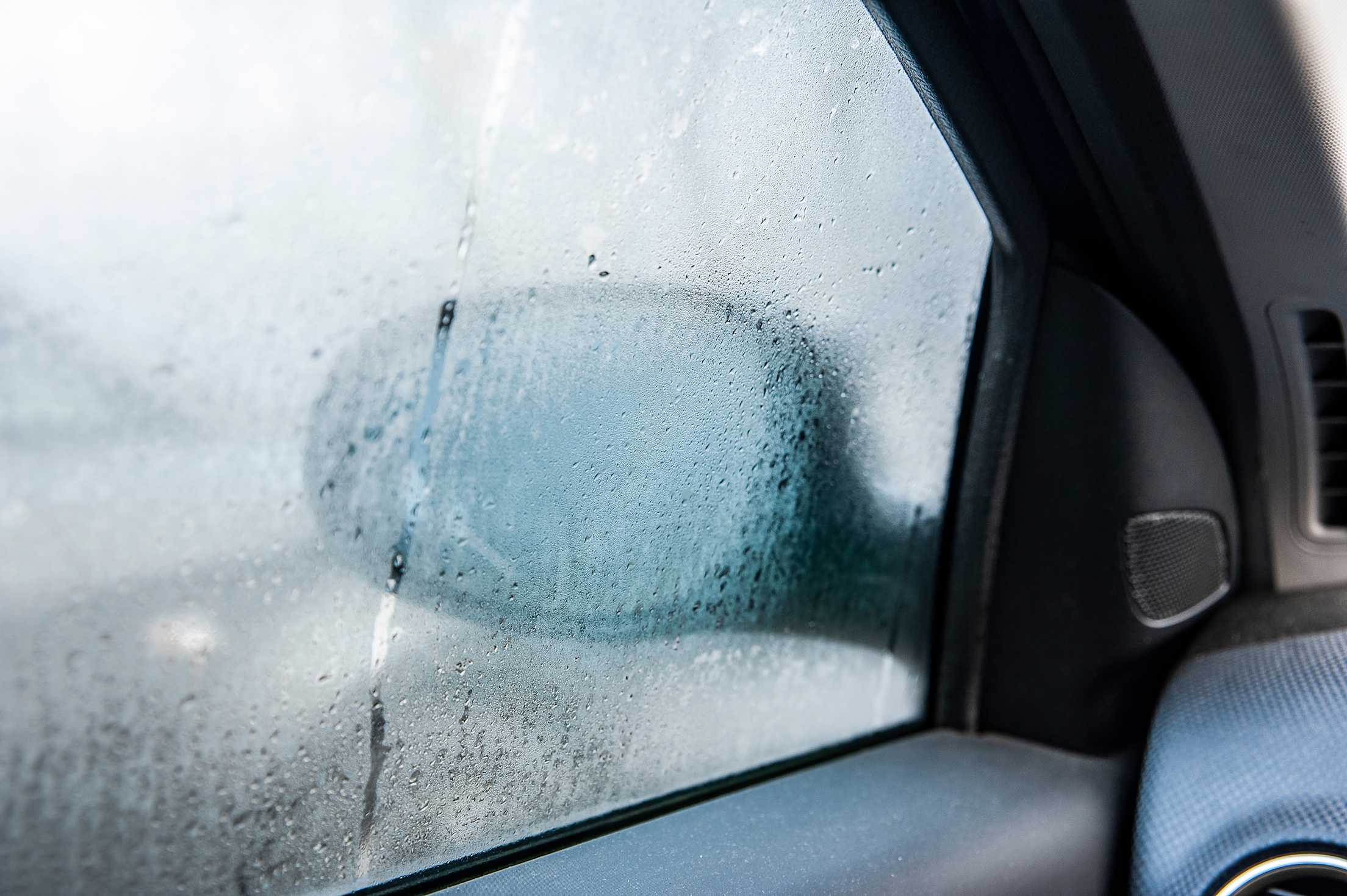
How to Quickly Defrost Your Car Windows
Remove fog and ice from your windows safely and quickly.

Have you ever gotten into your car on a cold or rainy day and your windows immediately fogged up? Or you’ve finally cleared the snow off your windshield only to find a layer of ice beneath? It’s no surprise that windows free from ice, snow, and fog are crucial for safe driving, but it can be frustrating to clear them.
Here’s how to quickly and safely remove ice from your windshield, clear condensation from inside your windows, and prevent fog from recurring on the glass.

How to Deice Your Windows
The best way to remove ice from your windows is to use an ice scraper and a little patience. “Get your engine running and crank the defroster to its maximum,” says Mike Quincy, automotive content specialist at Consumer Reports. “As the car begins to produce heat, you’ll be able to start scraping off the ice and snow.” In some states, idling the car for more than a certain length of time might be illegal, and it’s not good for the environment, so take that into consideration. Also, never leave your vehicle unattended while idling.
A commercial deicer might be helpful if you’re in a rush or have a particularly thick layer of ice. Having some on hand can help if you are frequently on a time crunch in the morning, live in an area where it snows regularly, or have struggled to effectively clear ice off in the past. Many winter windshield washer fluids have deicer in them, but they are only effective if the washer fluid nozzles aren’t iced over. Pouring some deicer into a spray bottle can work in a pinch.
You can create a homemade deicer using one part isopropyl alcohol, two parts water, and a few drops of dishwashing liquid. This may not be as effective as a commercial deicer, but it can be helpful if you don’t have a deicer on hand or if you prefer a more environmentally friendly alternative.
Never use hot or warm water on your windshield, no matter how much ice has built up. The drastic temperature change can (and often will) crack your windshield, costing you a pretty penny in the long run.
Smart Tip: Be sure to clear your entire car from snow and ice, not just the windshield. When ice or snow is left on the vehicle, it can fly off when driving at high speeds and cause visibility problems for drivers behind you. In extreme cases, sheets of ice or frozen snow can break another driver's windshield or cause them to lose control of their own vehicle.

How to Clear and Prevent Condensation (fog) on Your Car Windows
Condensation can develop on the inside of your car windows because of the difference in temperature inside and outside the car or from moisture inside the car. This condensation can make it impossible to clearly see out the windshield or side windows, and it needs to be dealt with immediately.
To prevent it from starting in the first place, turn on the defroster when you get into the car. “This will automatically engage air conditioning and a high fan speed, directing warm, dry air to the windshield and often the front side windows,” says Quincy.
Use your air conditioning in the winter instead of just turning the HVAC system to warm air to prevent foggy windows from occurring while you’re driving. You’ll also want to ensure that the air coming into the car is from outside instead of using the recirculation mode, which only makes things worse because it recirculates the damp air inside the car without removing any moisture.
“Cold air may be the last thing you want in the winter, but remember, this mode isn’t called chill—it’s ‘air conditioning’ because it dehumidifies the air. You can still set the temperature to a comfortable level and enjoy warm, dry air from the vents,” says Quincy.
If your A/C doesn’t work, opening the car windows slightly can do the trick. But don’t rub your clothing on the windows. This causes streaks and won’t fix the problem.